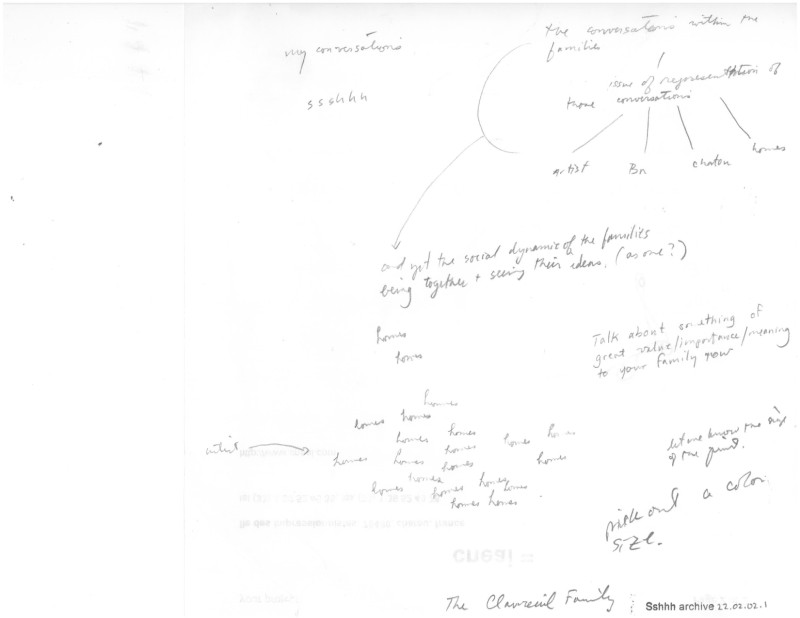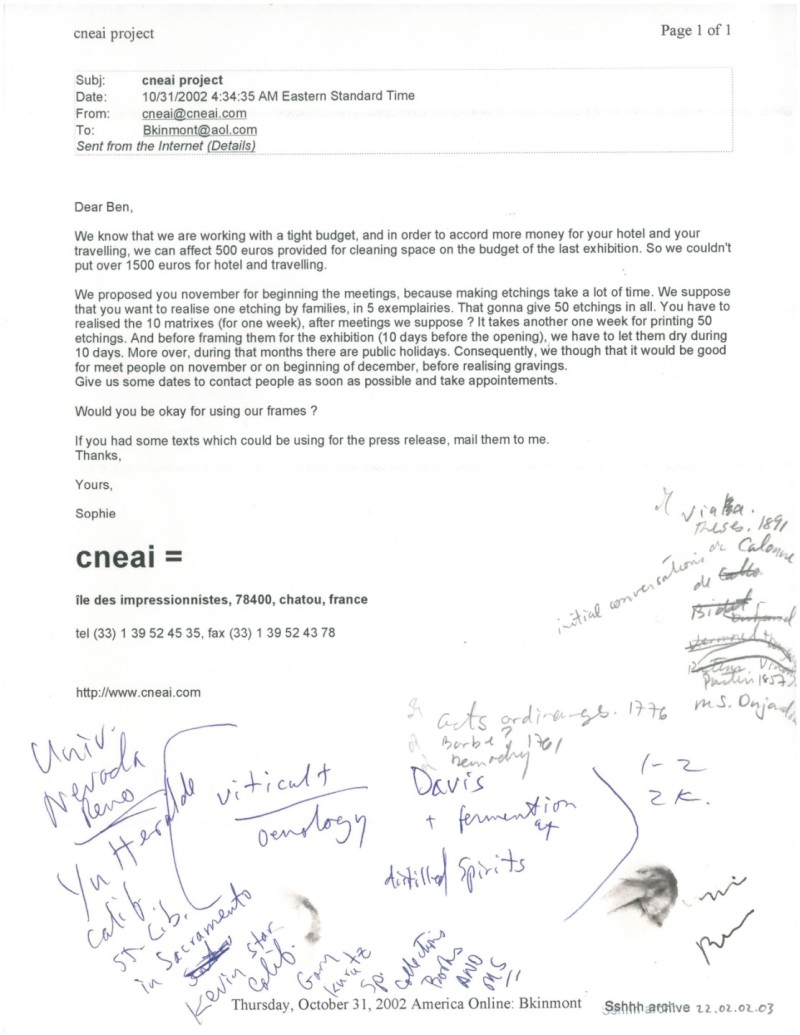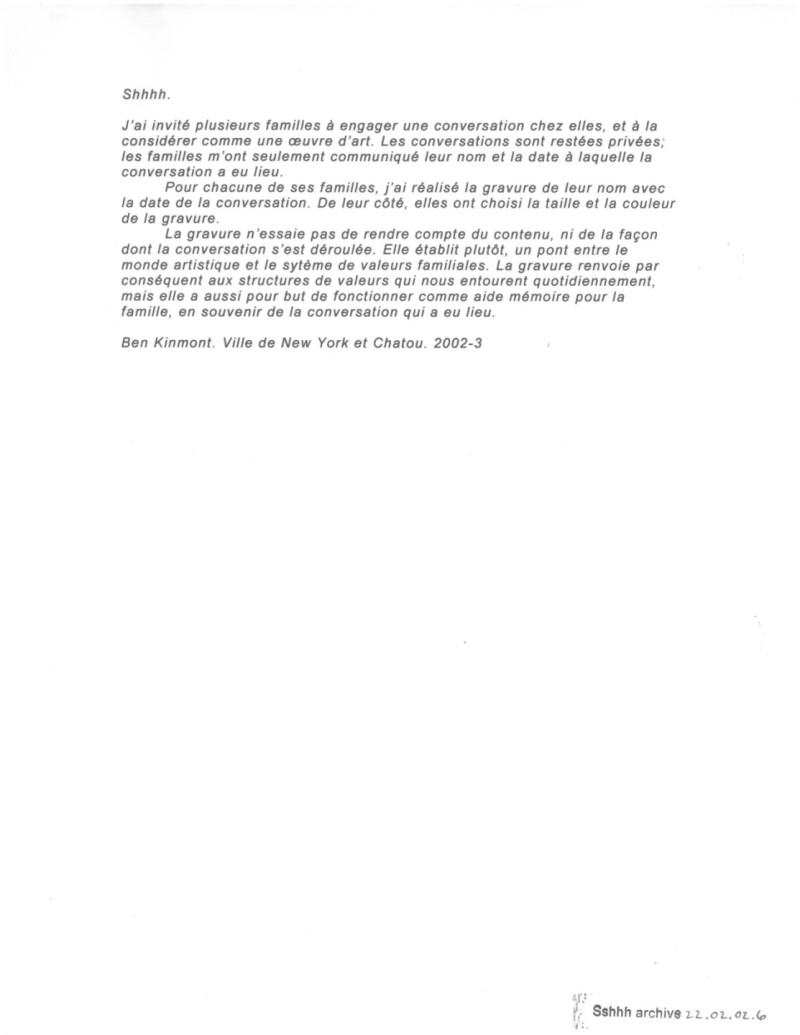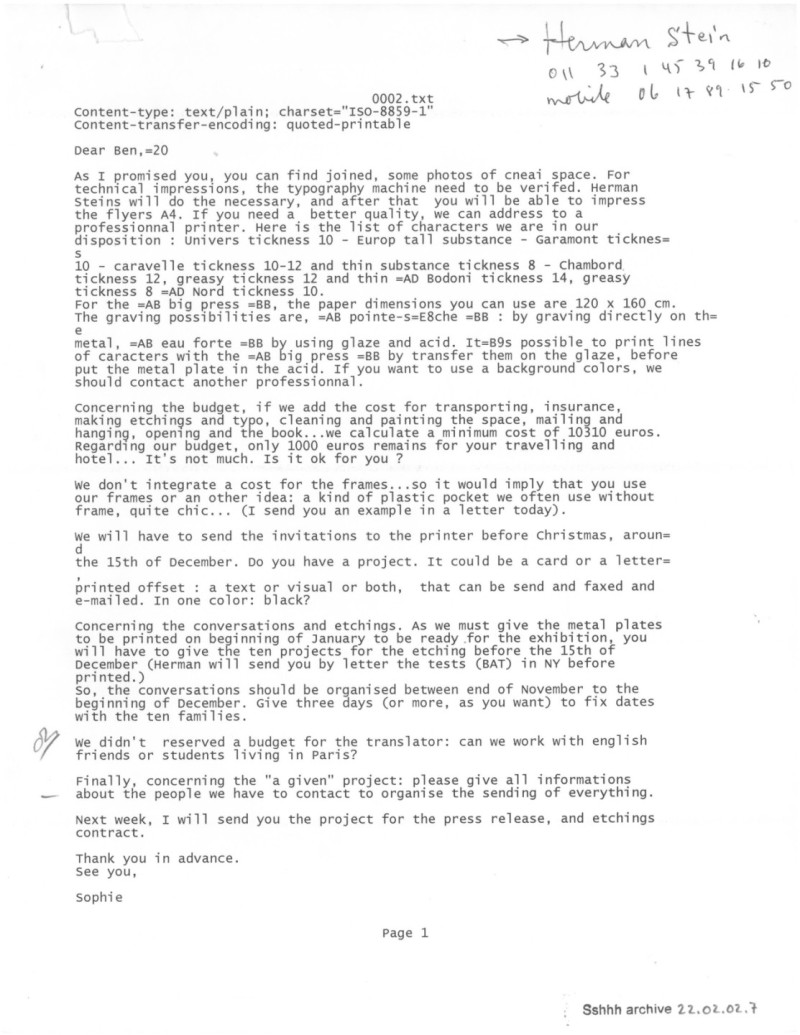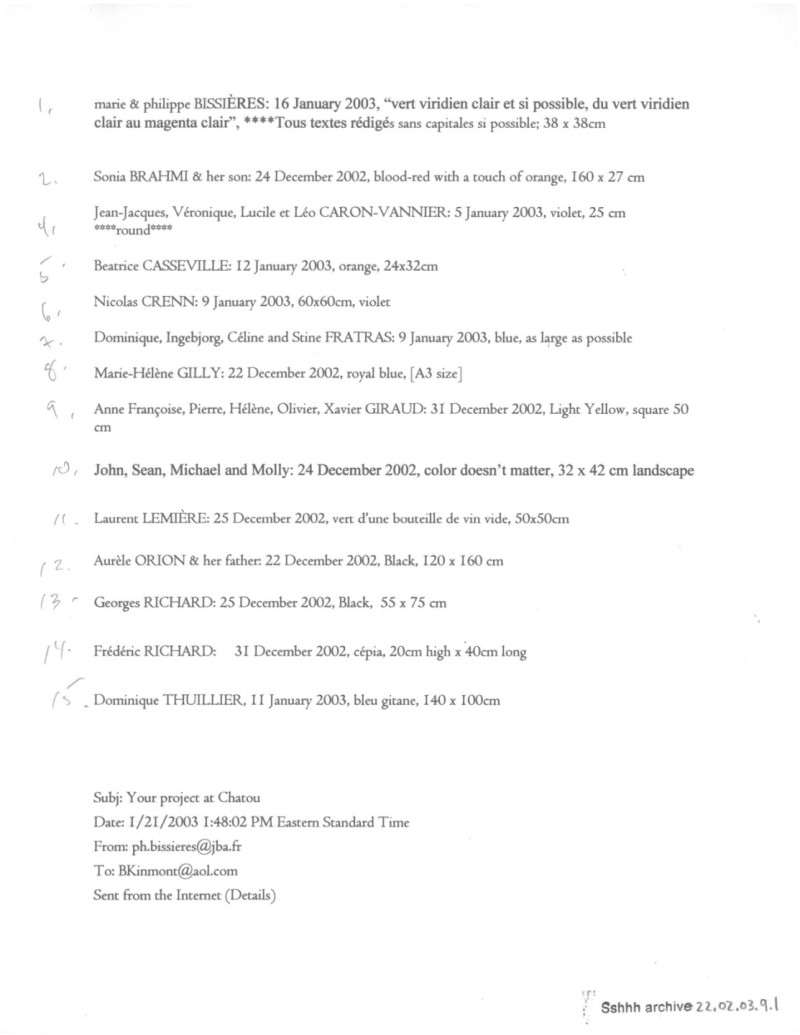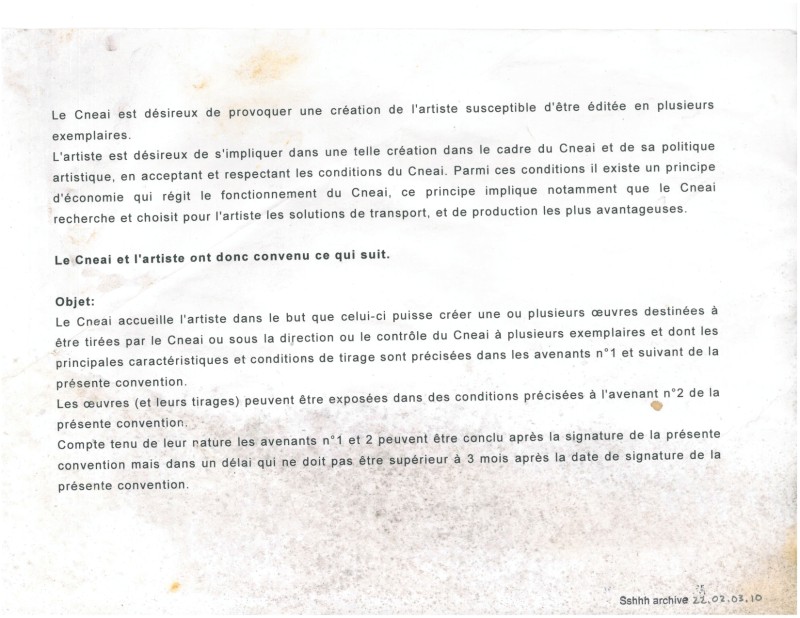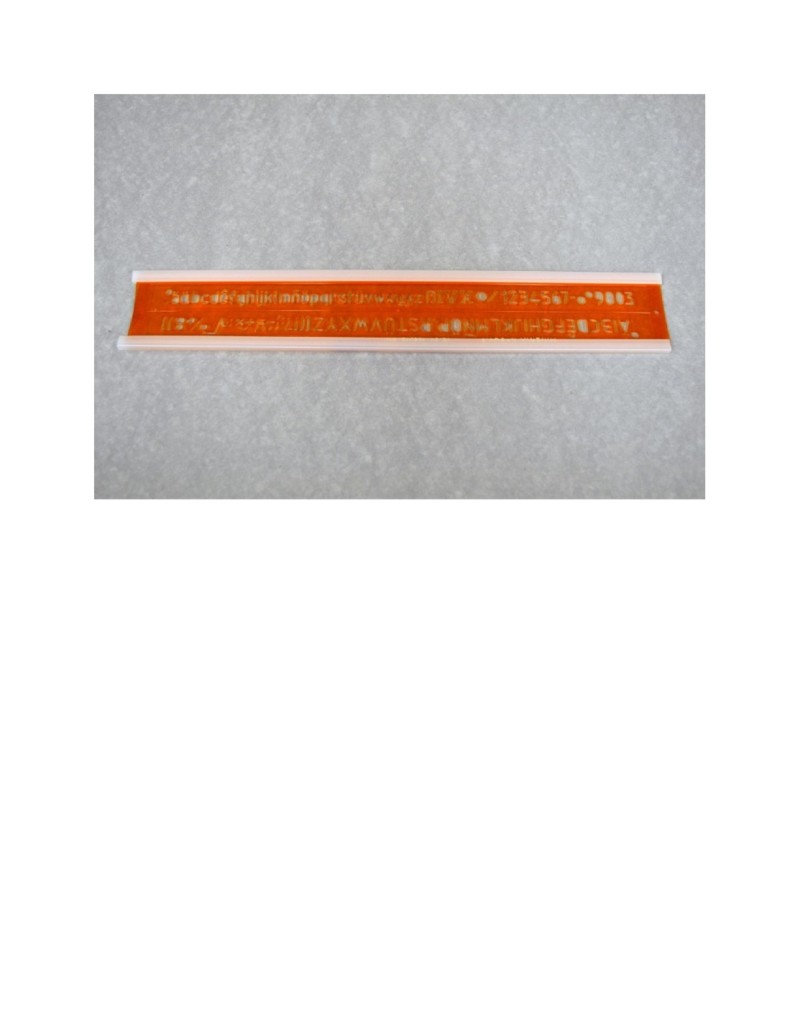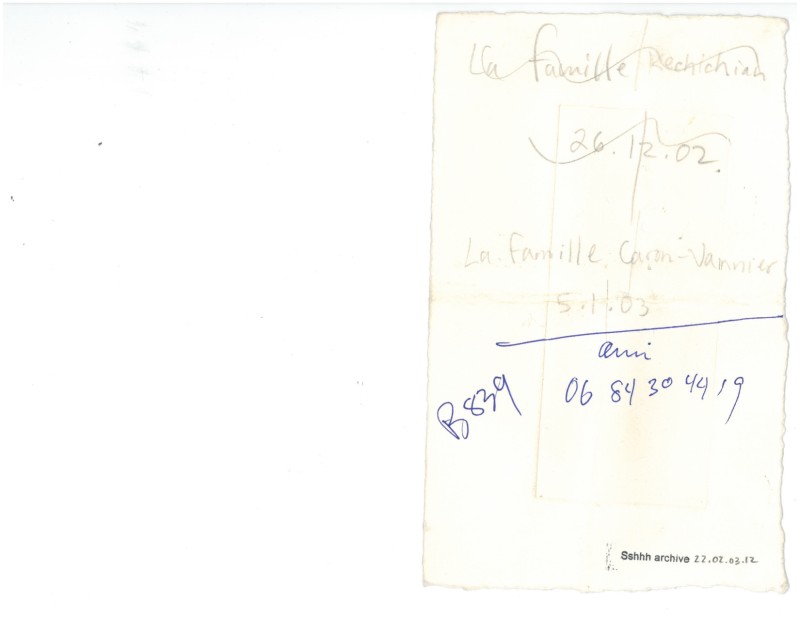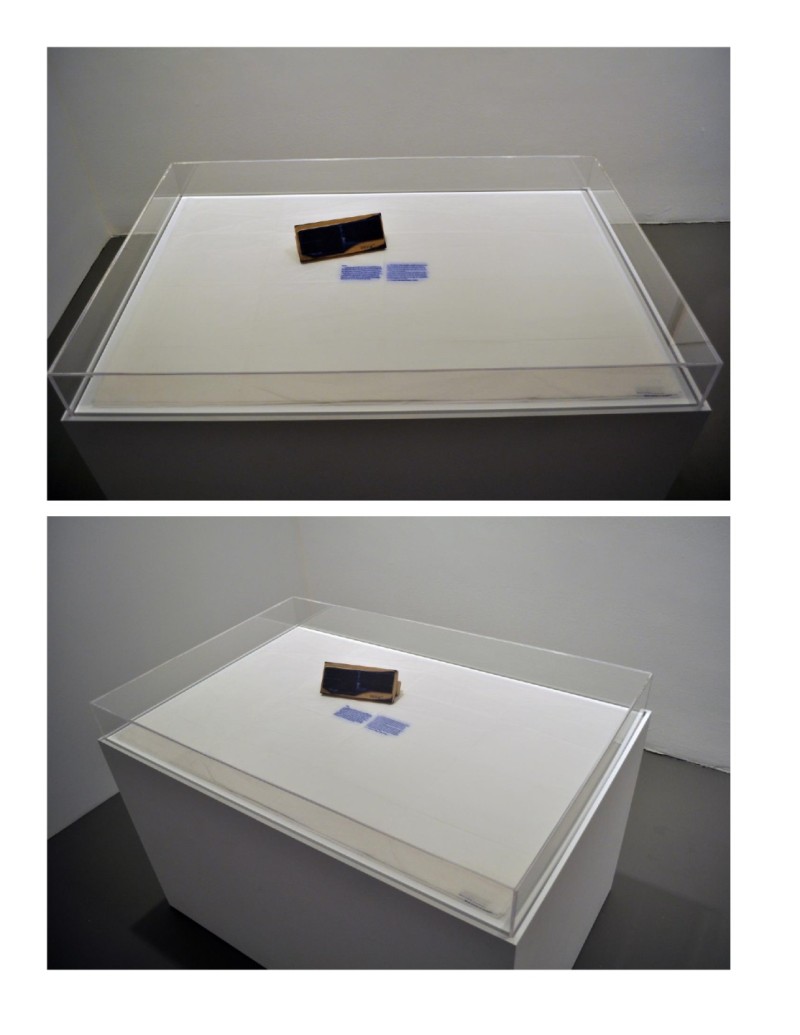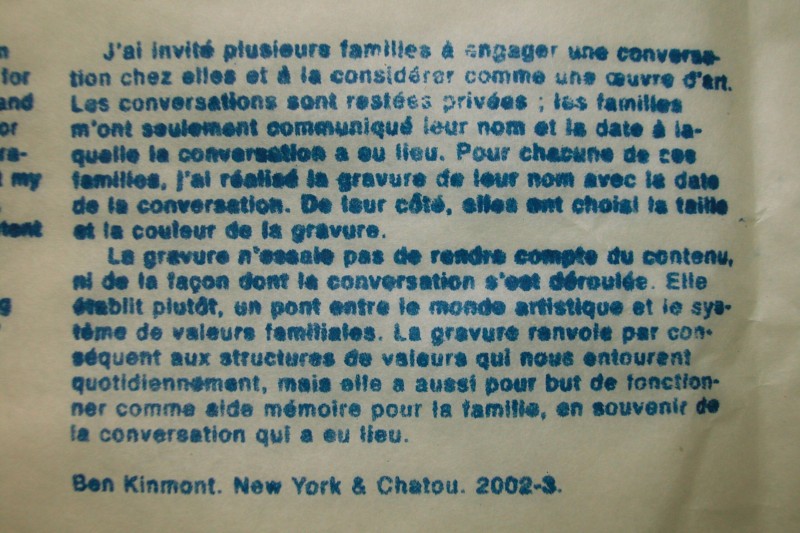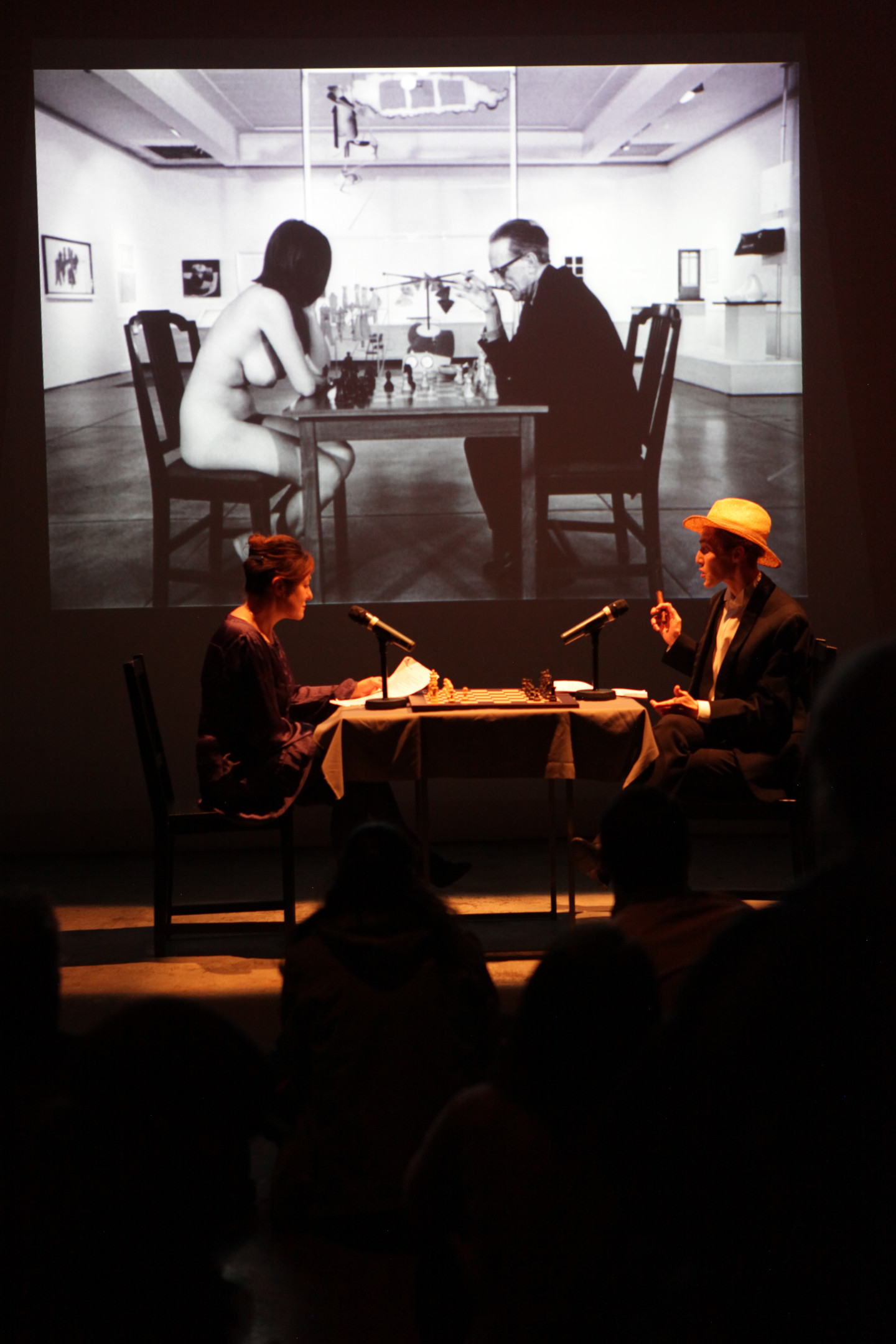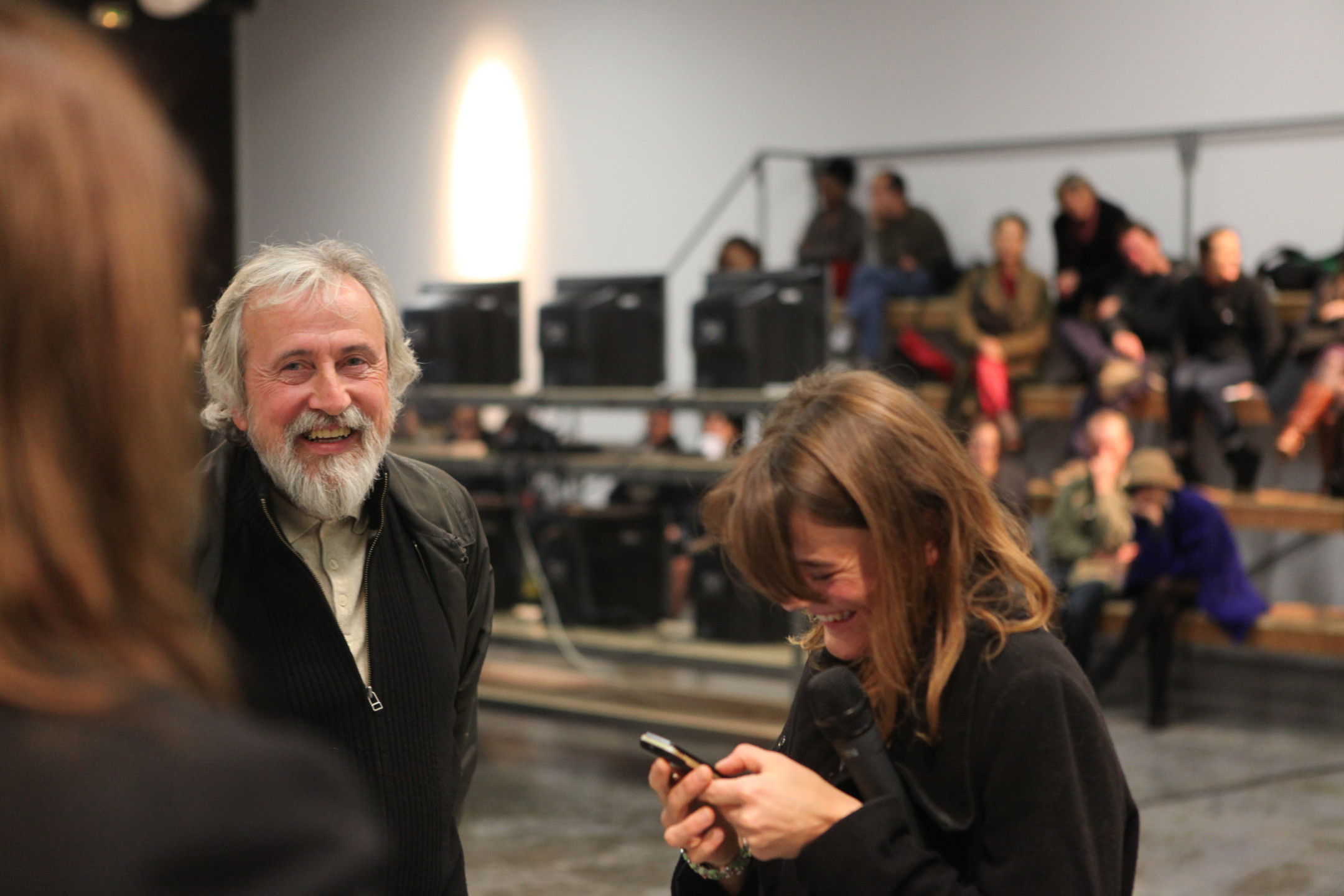- Dates de représentation 01/02/2003 (CNEAI = (Centre National Edition Art Image))
- Source CNEAI – Centre National Edition Art Image
- Artistes Ben Kinmont
- Commissaires Sylvie Boulanger
Depuis la fin du dix-neuvième siècle, les artistes se sont largement consacrées à éroder les limites entre l’art et la vie, affirmant que ce qu’on appelle l’art n’a pas de limites. Ben Kinmont s’oppose à cette supposition, affirmant au contraire que l’art n’est pas invité partout, et qu’il peut être destructeur ou immoral de représenter des conversations qui prennent place dans la sphère domestique. Le projet Sshhh explore ce que cela peut vouloir dire d’introduire avec éthique le privé dans l’espace public du musée, et réciproquement.
—
Since the late nineteenth century, avant-garde artists have largely been dedicated to breaking down the barriers between art and everyday life, and have argued that there are no limits to what can be called art. Artist Ben Kinmont disagrees with this premise, arguing that art “is not invited everywhere” and that it can be destructive or unethical to represent conversations that take place in the domestic realm. Kinmont’s interactive Sshhh project explores what it might mean to ethically introduce the private into the public space of the museum, and vice versa.
—
https://www.benkinmont.com/projects/shhhh
https://catalogue.bnf.fr/ark:/12148/cb40477723w
“Je me questionnais à propos des significations fragiles crées dans l’espace domestique, et sur la façon dont on pourrait créer des œuvres qui réfèrent à ces moments délicats sans les détruire.
J’ai alors invité des personnes vivant à Chatou à avoir une conversation chez eux, entre eux, et d’envisager la possibilité que cette conversation soit une œuvre d’art. Avant cela, au CNEAI, j’avais fait une présentation à propos de mes projets passés autour de la conversation comme sculpture. Les familles qui souhaitaient participer rentrèrent chez elles et m’informèrent par email lorsque la conversation avait eu lieu. Le contenu et la nature de chaque conversation est resté secret et connu d’elles seules. 23 familles ont participé.
J’ai ensuite réalisé une gravure pour chaque famille. L’impression de la planche sur le papier était aveugle, et ne faisait figurer que le nom de la famille et de la date de leur conversation. A ma demande, chaque famille a choisi la couleur et la taille de leur gravure, et 4 versions en ont été réalisées : une pour les participant·es, une pour le CNEAI, une pour la Bibliothèque Nationale de France, et une pour moi.
La gravure ne documente pas le contenu de la conversation, elle atteste seulement qu’une conversation a eu lieu, au sein d’une famille, un certain jour. Elle fonctionne comme un objet d’art, c’est-à-dire quelque chose pouvant être exposé et pouvant circuler au sein du monde de l’art. Pour les membres des familles, cette gravure est plus que cela, elle est la trace d’un moment domestique, et fonctionne comme l’aide-mémoire d’une conversation qui a eu lieu.
Les gravures font partie de la collection des familles, du CNEAI, de la BNF et de l’artiste.”
Ben Kinmont
—
“I was wondering about the fragile meanings created at home, and how one can create work about, or in reference to, these delicate moments yet without their destruction.
So, I invited people living in Chatou to have a conversation in their home, amongst themselves, and to consider the possibility of this conversation as a work of art. Before, in the CNEAI, I spoke about past projects and historical precedents for conversation as sculpture. The families who wanted to participate then went home, each later notifying me by email to say when they had had their conversation. The content and nature of each conversation remained a secret known only to them. 23 families participated.
Afterwards, I made each family an engraving. The plate’s impression on the paper was blind with the exception of the family’s name and the date of their conversation. At my request each family chose the size and color of their engraving and four impressions were made of each: one for the participant, one for the CNEAI, one for the Bibliothèque Nationale, and one for myself. The engraving does not document the content of the conversation. It tells only that there was a conversation had by a family on a certain day. However, it does function as an art object, as something to be exhibited and which can circulate within the art world. For those within the family, the engraving is more; it comes out of a domestic moment and functions as an aide memoire for a conversation once had.
Prints are in the collections of the families, CNEAI, Bibliothèque Nationale, and the artist.”
Ben Kinmont
- Nombre d’œuvres dans le fonds 1







